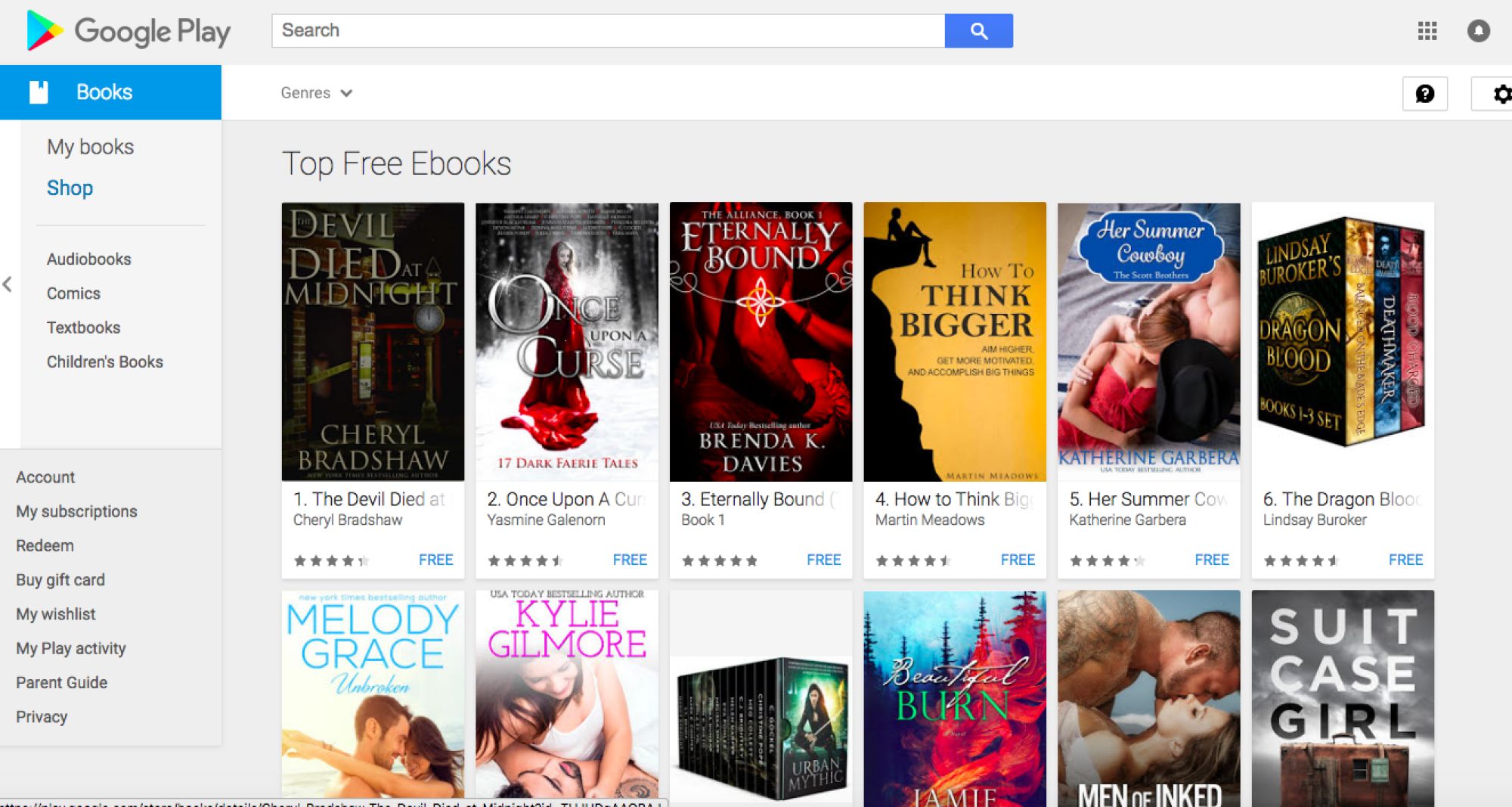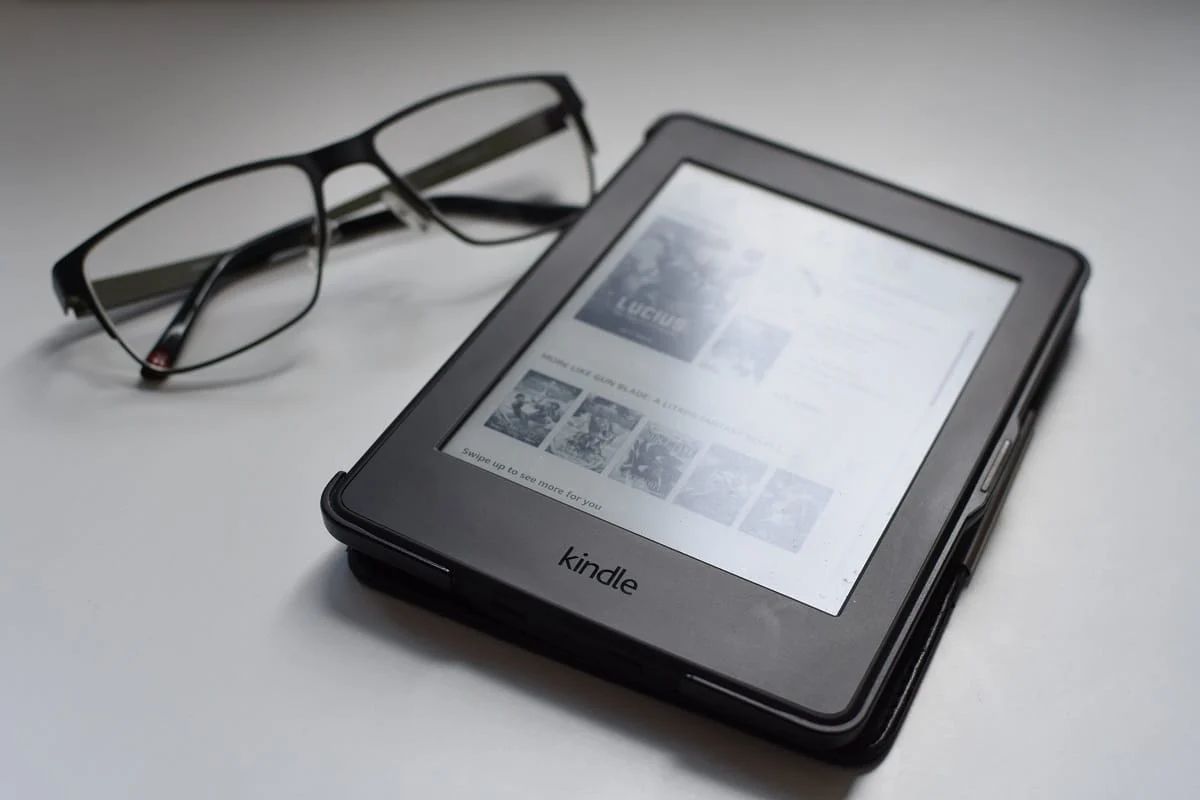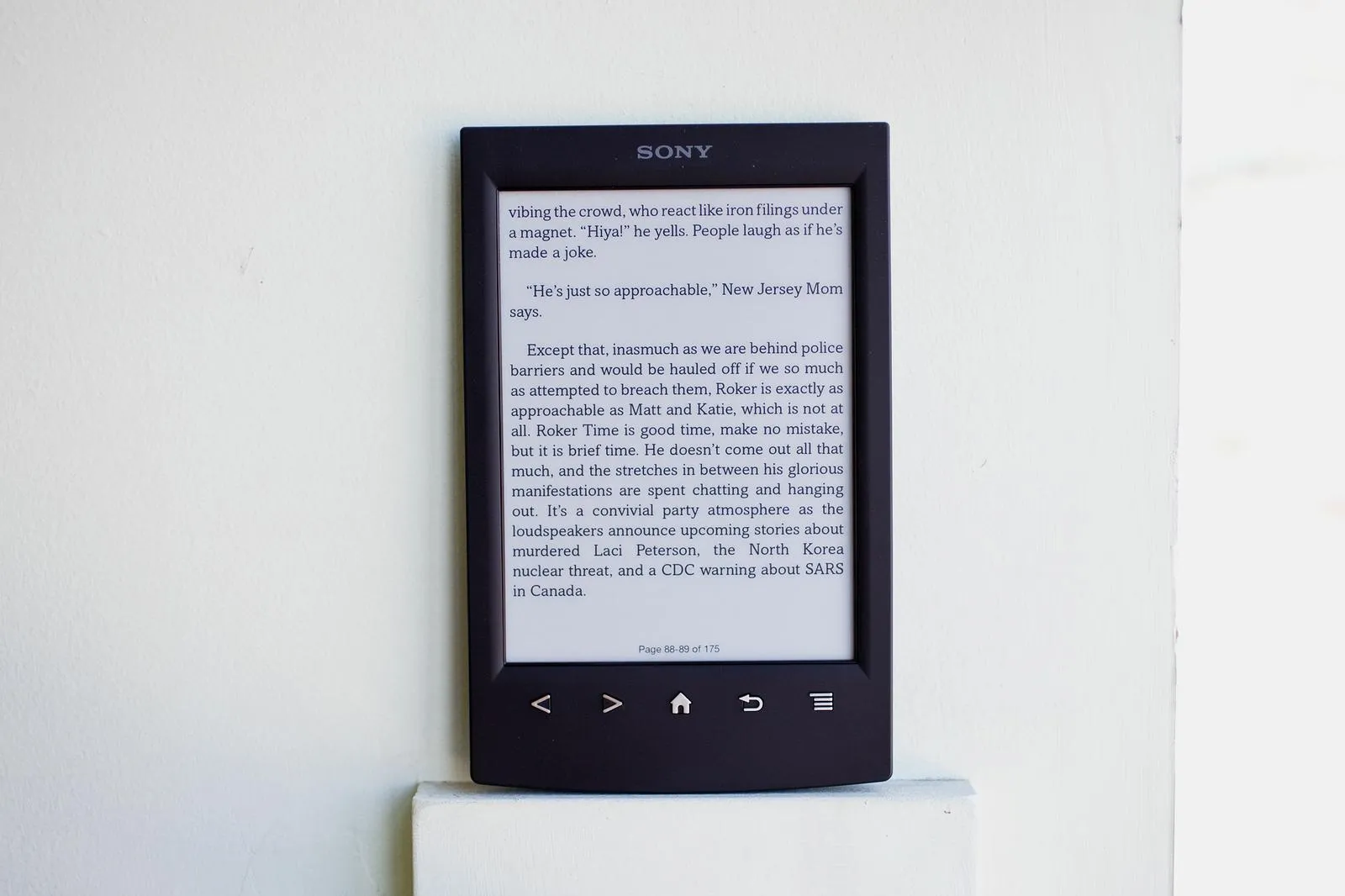Introduction
Welcome to the digital age, where the world of books has expanded beyond the limits of paper and ink. E-books, or electronic books, have taken the publishing world by storm, offering convenience and accessibility to avid readers everywhere. Whether you’re a book lover looking to expand your literary horizons or a student searching for educational resources, downloading e-books has become a popular and practical way to satisfy your reading cravings.
In this article, we’ll guide you through the process of downloading e-books, providing valuable tips and insights. From choosing the right e-book platform to troubleshooting common downloading issues, you’ll find everything you need to embark on your digital reading journey.
Before we dive into the details, it’s important to mention that e-books come in various formats, including PDF, EPUB, MOBI, and more. These formats determine the compatibility of the e-book with different devices and software. Depending on your preferred reading device, you may need to convert the e-book file format to ensure seamless enjoyment. We’ll delve deeper into this topic later on.
First, let’s explore the different e-book platforms available to readers today.
Choosing the Right E-Book Platform
With numerous e-book platforms available, it can be overwhelming to decide which one is best suited to your reading preferences. Each platform offers a unique set of features and benefits, so it’s important to consider your needs before making a choice.
One of the most popular e-book platforms is Amazon Kindle, which offers a vast library of e-books and a user-friendly interface. The Kindle platform is compatible with various devices, including Kindle e-readers, smartphones, and tablets. It also provides features like highlighting, note-taking, and syncing across devices, making it a favorite among readers.
If you prefer a broader selection of e-books, consider platforms like Apple Books or Google Play Books. These platforms offer a wide range of titles and are compatible with iOS and Android devices. Additionally, they provide features such as bookmarking, font customization, and the ability to access your e-books on multiple devices.
For those who enjoy reading on a computer or laptop, platforms like Adobe Digital Editions and Calibre offer a desktop reading experience. These platforms support various file formats and allow for easy organization and management of your e-book collection.
If you’re interested in exploring independent authors or niche genres, platforms like Smashwords and Kobo Writing Life may be worth considering. These platforms provide a platform for self-published authors to distribute their e-books and offer a unique selection of titles that may not be found on larger platforms.
Before committing to a specific e-book platform, it’s a good idea to explore their respective libraries, reading features, and compatibility with your preferred devices. Many platforms also offer free trials or limited-time promotions, allowing you to test their offerings before making a decision.
Now that you have a better understanding of the different e-book platforms available, let’s move on to the next step: finding the perfect e-books to download.
Finding E-Books to Download
Once you’ve chosen the right e-book platform, the next step is to find the e-books that pique your interest. Fortunately, there are numerous ways to discover and access a wide range of e-books online.
1. Explore the platform’s library: Start by browsing through the vast collection of e-books available on your chosen platform. Use the search bar or browse through different categories and genres to find books that align with your preferences.
2. Check out free e-books: Many e-book platforms offer a selection of free e-books. These can be classics, promotional offers, or independent publications. Take advantage of these freebies to discover new authors or explore genres you may not have considered before.
3. Utilize online libraries: Public libraries often have partnerships with e-book platforms that allow members to borrow e-books for a limited period. Check if your local library offers this service, as it can give you access to a wide range of titles without any additional cost.
4. Join online reading communities: Websites and forums dedicated to e-book enthusiasts are excellent resources for discovering new titles and connecting with fellow readers. These communities often share recommendations, reviews, and even links to free or discounted e-books.
5. Subscribe to book newsletters: Many publishers and e-book platforms offer newsletters that highlight new releases, discounted e-books, and exclusive offers. Signing up for these newsletters can help you stay informed about the latest books in your favorite genres.
6. Follow authors and publishers on social media: Keep an eye on your favorite authors and publishers’ social media accounts. They often share updates, release dates, and even exclusive previews of upcoming works. This can be a great way to discover new releases and connect with the literary community.
Remember to prioritize your interests and preferences when searching for e-books. Take advantage of the various filters and search options available on e-book platforms to narrow down your choices to specific genres, authors, or publication dates.
Now that you know how to find e-books, let’s move on to the next step: downloading e-books onto your preferred devices.
Downloading E-Books on Various Devices
Downloading e-books onto your preferred devices is a simple and straightforward process. Whether you’re using a Kindle e-reader, a smartphone, a tablet, or a computer, e-books can be easily accessed and enjoyed.
1. Kindle e-readers: If you own a Kindle e-reader, the process of downloading e-books is seamless. Simply connect your Kindle to a Wi-Fi network, open the Kindle Store, browse for the e-book you want, and click on the “Buy” or “Download” button. The e-book will be automatically delivered to your device and ready to read.
2. Smartphones and tablets: Many e-book platforms have dedicated apps for iOS and Android devices that allow you to access your e-book library on the go. Download the app from your device’s app store, sign in to your account, and start browsing for e-books. Once you find a book you want to download, select the “Download” or “Add to Library” option, and the e-book will be available for offline reading.
3. Computers and laptops: If you prefer reading e-books on your computer or laptop, most e-book platforms offer desktop applications or web readers. Simply download and install the designated software or access the platform’s website, sign in to your account, and start exploring the e-book library. To download an e-book, look for the “Download” or “Save” option, and the e-book file will be saved to your computer for offline reading.
4. Other e-book readers: If you’re using a different e-book reader, such as Nook, Kobo, or Sony Reader, the process may vary. Make sure to check the user manual or the e-book platform’s website for specific instructions on how to download e-books onto your device. Most platforms provide compatible file formats, allowing you to transfer e-books onto your reader using a USB cable or through the device’s built-in store.
Remember to manage your device’s storage space and consider deleting e-books you’ve finished reading to make room for new ones. Additionally, some e-book platforms offer the option to automatically sync your reading progress across multiple devices, allowing you to seamlessly switch between devices without losing your place in the book.
Now that you know how to download e-books on various devices, let’s move on to the next step: transferring e-books to e-readers.
Transferring E-Books to E-Readers
If you prefer reading e-books on dedicated e-readers like Nook, Kobo, or Sony Reader, you may need to transfer the downloaded e-books from your computer or other devices onto your e-reader. The process differs slightly depending on the e-reader and the file format of the e-books you have.
1. Connect your e-reader to your computer: Use the USB cable provided with your e-reader to connect it to your computer. Ensure that the e-reader is recognized by your computer and appears as a connected device in your file explorer.
2. Locate the downloaded e-books: Open the folder on your computer where you have downloaded or saved the e-book files. The location may vary depending on the e-book platform or software you are using. Locate the e-book file(s) you want to transfer to your e-reader.
3. Copy the e-book files: Select the e-book file(s) and copy them by right-clicking and selecting “Copy” or using the keyboard shortcut (Ctrl+C on Windows or Command+C on Mac).
4. Paste the e-books onto your e-reader: Open the file explorer or file manager on your computer and navigate to your e-reader device. Locate the appropriate folder for e-books on your e-reader (e.g., “Books” or “Documents”). Right-click within the folder and choose “Paste” or use the keyboard shortcut (Ctrl+V on Windows or Command+V on Mac) to transfer the e-books to your e-reader.
5. Safely remove your e-reader: After successfully transferring the e-books, safely eject or disconnect your e-reader from your computer. Follow the appropriate steps to safely remove the device to ensure that the e-books are properly saved and not at risk of corruption.
It’s important to note that not all e-readers support the same file formats. Ensure that the e-book file format is compatible with your e-reader. If necessary, you may need to convert the file format using software like Calibre or adjust the settings in the e-reader to support different formats.
Each e-reader may have specific requirements or formats it supports. Consult your e-reader’s user manual or the manufacturer’s website for detailed instructions on transferring e-books and ensuring compatibility.
Now that you know how to transfer e-books to your e-reader, let’s move on to the next step: ensuring compatibility with different file formats.
Ensuring Compatibility with Different File Formats
E-books come in various file formats, and not all devices or e-readers support every format. It’s essential to ensure compatibility between the file format of the e-book and the device you plan to read it on. Here are some tips to help you navigate file format compatibility:
1. Know the supported formats: Familiarize yourself with the supported e-book formats for your reading device. Common formats include EPUB, PDF, MOBI, AZW, and more. Refer to the device’s user manual or the manufacturer’s website to find a list of supported e-book formats.
2. Convert e-book formats if necessary: If an e-book is in a format that your device doesn’t support, you may need to convert it using conversion software like Calibre. This process involves transforming the e-book from one format to another while preserving its content and layout. However, keep in mind that the conversion may not always be perfect, and certain formatting elements may be affected.
3. Check file compatibility with e-book platforms: If you’re using an e-book platform like Amazon Kindle, Apple Books, or Google Play Books, ensure that the e-book format you have is compatible with the platform. Each platform may have specific requirements and supported formats. In some cases, you may need to convert the file to a compatible format or use the platform’s own conversion tools.
4. Consider DRM (Digital Rights Management): DRM is a technology used to protect the copyright of e-books. Some e-books are protected with DRM, which can limit their usage to specific devices or platforms. It’s important to be aware of DRM restrictions and ensure that the e-book you want to download is compatible with your device or the intended reading platform.
5. Utilize online converters: If you come across an e-book in an incompatible format, you can explore online converters that allow you to convert e-books from one format to another without the need for software installation. Be cautious when using online converters and ensure they are reputable and trustworthy.
By being mindful of the file formats and their compatibility with your devices and e-readers, you can ensure a smooth and enjoyable reading experience. Additionally, it’s worth considering the e-readers or devices that offer broader support for different formats, allowing for more flexibility in your e-book choices.
Now that you’re equipped with the knowledge of file format compatibility, let’s move on to the next step: storing and organizing your e-book collection.
Storing and Organizing Your E-Book Collection
As your e-book collection grows, it’s important to have a system in place to store and organize your digital library. Keeping your e-books organized can save you time and make it easier to find and access the books you want to read. Here are some tips for storing and organizing your e-book collection:
1. Create folders or categories: Use folders or categories to group your e-books based on genres, authors, or any other organizational criteria that suits your preferences. This allows for easy navigation and quick access to specific books.
2. Utilize metadata: Most e-book management software and platforms allow you to add metadata to your e-books, including titles, authors, genres, and descriptions. Take advantage of these features to add relevant information to your e-books, making it easier to search and sort through your collection.
3. Tagging and labeling: Consider using tags or labels to further categorize your e-book collection. You can assign tags based on themes, reading status (e.g., “To Read,” “Read,” “Favorites”), or any other criteria that will help you find specific books later on.
4. Keep track of reading progress: If you like to track your reading progress, make use of bookmarks or progress indicators available in your reading app or e-book platform. This allows you to easily pick up where you left off in each book.
5. Back up your e-books: Protect your e-book collection by regularly backing up your files. Consider using cloud storage services or external hard drives to ensure that your e-books are safely stored and can be retrieved in case of device failure or data loss.
6. Remove duplicates and outdated books: Periodically review your e-book collection and remove any duplicate files or books that are no longer of interest to you. This will help keep your library organized and free up storage space.
7. Sync across devices: If you read on multiple devices, enable syncing features offered by your e-book platform or reading apps. This ensures that your reading progress, bookmarks, and library organization are consistently updated across all your devices.
By implementing these strategies, you can create an efficient and well-organized e-book collection. Remember to regularly maintain and update your organization system as your collection continues to expand and evolve.
Now that you know how to store and organize your e-book collection, let’s move on to the next step: troubleshooting common downloading issues.
Troubleshooting Common Downloading Issues
While downloading e-books is generally a smooth process, there are occasional hiccups that can occur. Here are some common downloading issues you may encounter and how to troubleshoot them:
1. Slow or interrupted downloads: If you experience slow or interrupted downloads, check your internet connection. Ensure that you have a stable and reliable internet connection to prevent download disruptions. If the issue persists, try downloading the e-book at a different time, as peak usage hours may affect download speeds.
2. Error messages during download: If you encounter error messages while downloading e-books, take note of the specific error code or message. Perform a quick search online using the error message, as it may provide insights into the cause of the issue and potential solutions. If the problem persists, reach out to the e-book platform’s customer support for further assistance.
3. Incomplete or corrupted files: Occasionally, you may encounter incomplete or corrupted e-book files during the download process. If this happens, try re-downloading the e-book from the platform or contact customer support for assistance. Backing up your e-book library regularly can also help restore any lost or corrupted files.
4. Compatibility issues: Ensure that the e-book format you are downloading is compatible with your reading device or application. If the e-book is in an unsupported format, consider converting it to a compatible format using software like Calibre before downloading it to your device.
5. Account or payment issues: If you experience difficulties related to your account or payment during the download process, double-check your account settings and payment information. Ensure that your payment method is valid and up to date. If the issue persists, contact the e-book platform’s customer support for assistance.
6. Failed downloads: If a download fails to start or complete, try restarting the download. If the problem persists, double-check your internet connection, free up storage space on your device, and ensure that you have the required permissions to download files. If all else fails, contact the e-book platform’s customer support for further assistance.
Remember that troubleshooting steps may vary depending on the e-book platform, software, or device you are using. It’s always recommended to refer to the platform’s customer support or online resources for specific troubleshooting guides or reach out to their support team for personalized assistance.
Now that you’re equipped with troubleshooting strategies, you’re ready to overcome any downloading issues that may arise during your e-book journey.
Conclusion
Downloading e-books has revolutionized the way we access and enjoy reading material. With the convenience of digital platforms and the vast selection of e-books available, there’s never been a better time to explore the world of digital reading. Throughout this article, we’ve covered the essential steps to help you navigate the process of downloading e-books.
We began by discussing the importance of choosing the right e-book platform that aligns with your reading preferences. Whether you opt for Kindle, Apple Books, or another platform, it’s crucial to consider factors like device compatibility, book selection, and user-friendly features.
Next, we explored various methods for finding e-books to download, including browsing through platform libraries, accessing free e-books, utilizing online libraries, joining reading communities, and following authors and publishers through social media and newsletters. These strategies help you discover a wide range of e-books and expand your reading horizons.
We then delved into the process of downloading e-books on various devices. Whether you use a Kindle e-reader, smartphone, tablet, or computer, the steps are relatively straightforward, allowing for seamless access and enjoyment of your digital reading material.
Furthermore, we discussed the importance of ensuring compatibility between e-book file formats and your preferred reading devices. By being aware of the supported formats and utilizing conversion tools when needed, you can guarantee that your e-books can be read on your chosen device.
Organizing and managing your e-book collection is essential, and we provided tips on creating folders/categories, utilizing metadata and tags, tracking reading progress, backing up files, and removing duplicates. These strategies help maintain an organized library, making it easier to navigate and find your desired books.
Lastly, we addressed common downloading issues that may arise, such as slow or interrupted downloads, error messages, incomplete or corrupted files, compatibility issues, account or payment problems, and failed downloads. With troubleshooting strategies and reaching out to customer support when necessary, you can overcome these obstacles and continue enjoying your digital reading experience.
Now equipped with the knowledge and strategies outlined in this article, you’re ready to embark on your e-book journey with confidence. Whether you’re diving into classic literature, exploring new genres, or enhancing your knowledge through educational materials, downloading e-books opens up a world of possibilities at your fingertips.
Happy reading!

























